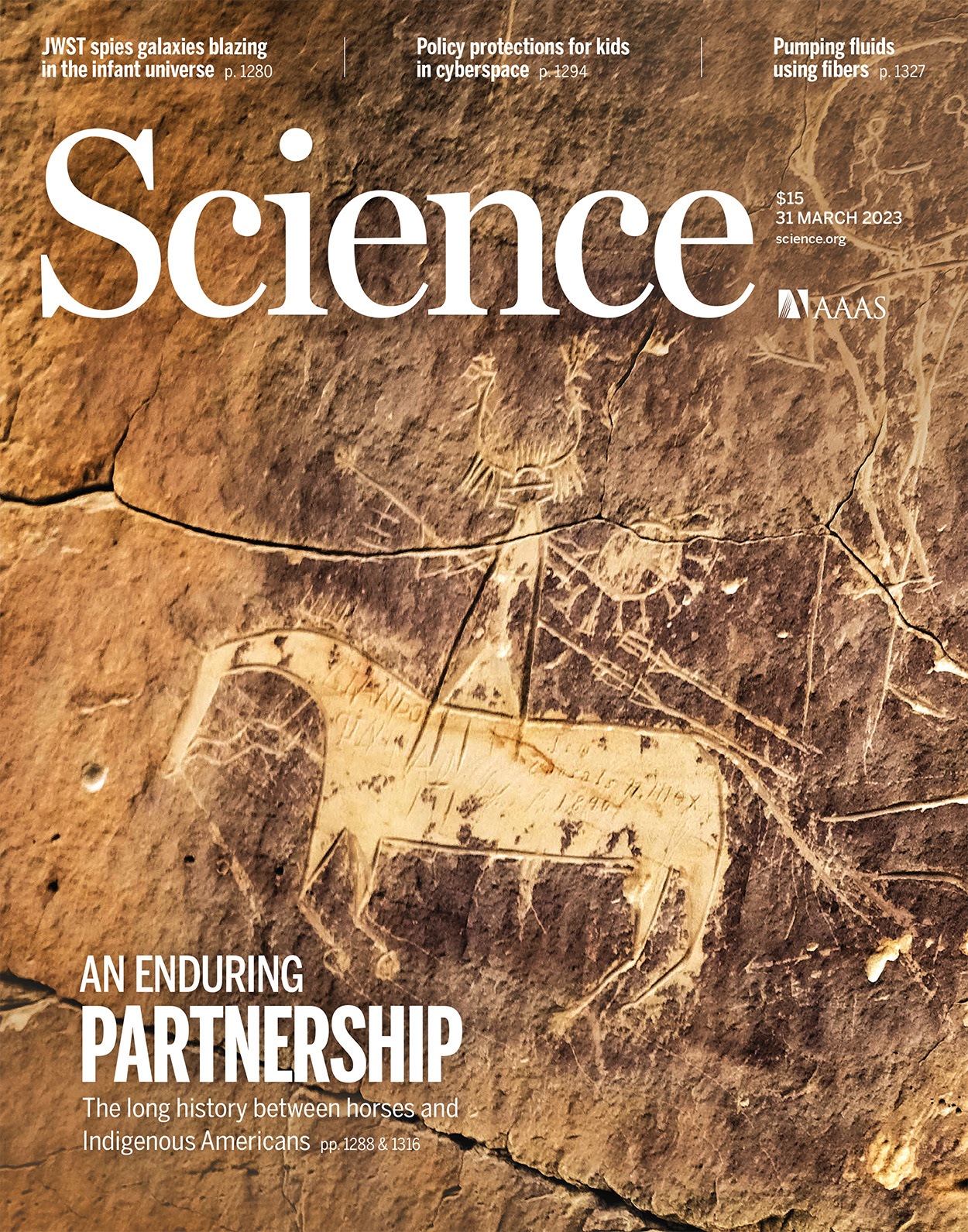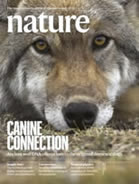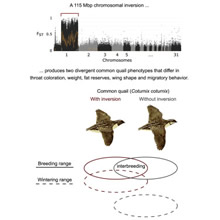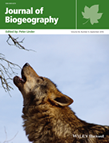Conservation and Evolutionary Genetics Group |
||||||||||
| HOME | PEOPLE | PROJECTS | PUBLICATIONS | RESOURCES | COURSES | JOB VACANCIES | NETWORKS | OUTREACH | CONTACT | |

|
Jennifer Leonard Conservation and Evolutionary Genetics Group |
|
Research interests My research interests lie in the effect of changes in the environment on the genetic diversity of natural populations, with emphasis on the temporal perspective using ancient DNA. This type of research can be applied to fundamental questions in evolution, conservation and domestication. Many major environmental and population/species level changes have occurred in rapid succession since the late Pleistocene. The last 60,000 years in North America include a full glacial cycle; the opening and closing of the Bering land bridge; large changes in precipitation, temperature and vegetation; the arrival of humans and some other large mammal species; and a mass extinction event. The more recent end of this time frame includes the period in which animals were domesticated and humans expanded into the New World and across the Pacific. During the last millennia, a lot of human mediated changes have occurred, from the “discovery” of the New World by European explorers to historic predator control programs and changes in land use. Recent advances in molecular genetics enable DNA to be obtained from many bone remains spanning this age range. Although most of the work done with DNA from such old remains has involved just one or a few samples and aimed to determine the relationship between extinct and extant taxa such as the wooly rhino and extant rhinos, these techniques have opened the possibility of being able to look at genetic changes in these populations directly as the environment changed. It is now possible to apply powerful population genetics techniques to these past populations to complement demographic and ecological studies. Current Collaborators Evolution of Biodiversity on the Sunda Shelf
Diversity and conservation of domestic and wild canids
Publications
Peer-reviewed Articles 2025 109 Large inversions shape diversification and genome evolution in common quails 108 Global meta analysis shows that conservation action is needed to halt genetic diversity loss 107 Potential adaptive introgression from dogs into Iberian grey wolves (Canis lupus) 2024 106 Lost in synonymy: Integrative species delimitation reveals two unrecognized species of Southern Asian tree squirrels (Rodentia: Sciuridae: Callosciurinae) 105 Contextualising samples: supporting reference genomes of European biodiversity through sample and associated metadata collection 104 Demographic history shapes North American gray wolf genomic diversity and informs species’ conservation 2023 103 An integrative taxonomic revision of lesser gymnures (Eulipotyphla: Hylomys) reveals five new species and emerging patterns of local endemism in Tropical East Asia 102 Equids (Equus sp.) in southern Spain from the Palaeolithic to the Bronze Age 101 Large variance in inbreeding within the Iberian wolf population 100 FAIR data would alleviate large carnivore conflict 99 Remembering distinguished professor Robert K. Wayne 98 How genomics can help biodiversity conservation 97 Evolutionary history and patterns of divergence in three tropical east Asian squirrels across the Isthmus of Kra 96 Evolutionary history of an island endemic, the Azorean common quail 95 Early dispersal of domestic horses into the Great Plains and northern Rockies
94 Loss of mitochondrial genetic diversity despite population growth: the legacy of past wolf population declines 2022 93 Complete mitogenomes of the garden dormouse (Eliomys quercinus): a new resource for the genetic monitoring of a fast-declining European small mammal
92 Evolutionary history of Sundaland shrews (Eulipotyphla: Soricidae: Crocidura) with a focus on Borneo
91 Grey wolf genomic history reveals a dual ancestry of dogs
90 Challenging ecogeographical rules: Phenotypic variation in the Mountain Treeshrew (Tupaia montana) along tropical elevational gradients
89 The era of reference genomes in conservation genomics
88 Taxonomic status of southern Iberian Neomys populations with evolutionary and conservation implications
87 Massive genome inversion drives coexistence of divergent morphs in common quails
2021 86 Automated genotyping of microsatellite loci from feces with high throughput sequences
85 A sliver of the past: The decimation of the genetic diversity of the Mexican wolf
84 Phylogenomics and evolutionary history of Oreobates (Anura:
Craugastoridae) Neotropical frogs along elevational gradients
83 Greater bandicoot rats (Bandicota indica) are not native to Sundaland based on deoxyribonucleic acid (DNA) analyses
82 Markers for genetic change
81 Pleistocene climate fluctuations drove demographic history of African golden wolves (Canis lupaster)
2020 80 Little genetic structure in a Bornean endemic small mammal across a steep ecological gradient
79 Spatiotemporal analyses suggest the role of glacial history and the ice-free corridor in shaping American badger population genetic variation
78 Mitogenomes reveal multiple colonization of mountains by Rattus in Sundaland
77 Towards high-throughput analyses of fecal samples from wildlife
76 Ancient divergence driven by geographic isolation and ecological adaptation in forest dependent Sundaland tree squirrels
75 Feeding specialization of Honey Badgers in the Sahara desert: a trial of life in a hard environment
2019 74 Tracking five millennia of horse management with extensive ancient genome time-series
73 Endemism and diversity of small mammals along two neighboring Bornean mountains
72 Lethal management may hinder population recovery in Iberian wolves
2018 71 On the path to extinction: Inbreeding and admixture in a declining grey wolf population
70 Interglacial refugia on tropical mountains: Novel insights from the summit rat (Rattus baluensis), a Borneo mountain endemic 2017 69 Evolutionary history of saber-toothed cats based on ancient mitogenomics
68 Defense of an expanded historical range for the Mexican Wolf: A comment on Heffelfinger et al.
67 The generic status of Rattus annandalei (Bonhote, 1903) (Rodentia, Murinae) and its evolutionary implications
66 A practical guide to build de-novo assemblies for single tissues of non-model organisms: the example of a Neotropical frog 65 Bone loss from carcasses in Mediterranean ecosystems
64 Wolf population genetics in Europe: a systematic review, meta-analysis and suggestions for conservation and management
2016 63 A novel MC1R allele for black coat colour reveals the Polynesian ancestry and hybridisation patterns of Hawaiian feral pigs
Link
62 Whole mitochondrial genomes illuminate ancient intercontinental dispersals of grey wolves (Canis lupus)
61 Evolutionary history of endemic Sulawesi squirrels constructed from UCEs and mitogenomes sequenced from museum specimens
60 Phylogeny, biogeography and systematic revision of plain long-nosed squirrels (genus Dremomys, Nannosciurinae)
2015 59. Koepfli K-P, Pollinge J, Godinho R, Robinson J, Lea A, Hendricks S, Schweizer RM, Thalmann O, Silva P, Fan Z, Yurchenko AA, Dobrynin P, Makunin A, Cahill JA, Shapiro B, Álvares F, Brito JC, Geffen E, Leonard JA, Helgen KM, Johnson WE, O’Brien SJ, Van Valkenburgh B, Wayne RK (2015) Genome-wide evidence reveals that African and Eurasian golden jackals are distinct species. Current Biology 25: 2158-2165.
58. Brandariz-Fontes C*, Camacho-Sanchez M*, Vilà C, Vega-Pla JL, Rico C, Leonard JA (2015) Effect of the enzyme and PCR conditions on the quality of high-throughput DNA sequencing results. Scientific Reports 5: Article 8056. (*Equal contribution)
Link 57. Leonard JA, den Tex R-J, Hawkins MTR, Muñoz-Fuentes V, Thorington R, Maldonado JE (2015) Phylogeography of vertebrates on the Sunda Shelf: a multi-species comparison. Journal of Biogeography 42: 871-879.
2014 56. Leonard JA (2014) Ecology drives evolution in grey wolves. Evolutionary Ecology Research 16: 461-473.
Link 55. Leonard JA (2014) Adapting to global change. Evolutionary Ecology Research 16: 441-444.
Link 54. den Tex R-J & Leonard JA (2014) The phylogeography of red and yellow coppersmith barbets (Aves: Megalaima haemacephala). Frontiers in Ecology and Evolution, 2: 00016. doi: 10.3389/fevo.2014.00016
Link 2013 53. Thalmann O, B Shapiro, P Cui, VJ Schuenemann, SK Sawyer, DL Greenfield, MB Germonpré, MV Sablin, F Lopez-Giraldez, X Domingo-Roura, H Napierala, H-P Uerpmann, DM Loponte, AA Acosta, L Giemsch, RW Schmitz, B Worthington, JE Buikstra, A Druzhkova, AS Graphodatsky, ND Ovodov, N Wahlberg, AH Freedman, RM Schweizer, K-P Koepfli, JA Leonard, M Meyer, J Krause, S Pääbo, RE Green, RK Wayne (2013)
Complete mitochondrial genomes of ancient canids suggest a European origin of domestic dogs. Science 342: 871-874
(Highlighted in Science)
52. Brandariz-Fontes C, Leonard JA, Vega-Pla JL, Backström N, Lindgren G, Lippold S, Rico C (2013) Y-chromosome analysis in Retuertas horses. PLoS ONE 8 (5): e64985
Link 51. Losey RJ, Garvie-Lok S, Leonard JA, Katzenberg MA, Germonpré M, Nomokonova T, Sablin MV, Goriunova OI, Berdnikova EN, Savelev NA (2013) Burying dogs in ancient cis-Baikal, Siberia: Temporal trends and relationships with human diet and subsistence practices. PLoS ONE 8 (5): e63740
Link 50. Camacho-Sanchez M, Burraco P, Gomez-Mestre I, Leonard JA (2013) Preservation of RNA and DNA from mammal samples under field conditions. Molecular Ecology Resources 13 (4): 663-673.
49. Hailer F, Kutschera VE, Hallström BM, Fain SR, Leonard JA, Arnanson U, Janke A (2013) Response to comment on: Nuclear genomic sequences reveal that polar bears are an old and distinct bear lineage. Science 339: 1522
48. Den Tex R, Leonard JA (2013) A molecular phylogeny of Asian barbets: Speciation and extinction in the tropics. Molecular Phylogenetics and Evolution 68: 1-13
47. Druzhkova AS, Thalmann O, Trifonov VA, Leonard JA, Vorobieva NV, Ovodov ND, Graphodatsky AS, Wayne RK (2013) Ancient DNA analysis affirms the canid from Altai as a primitive dog. PLoS ONE 8 (3): e57754.
Link 46. Byrd BF, Cornellas A, Eerkens JW, Rosenthal JS, Carpenter TR, Leventhal A, Leonard JA (2013) The role of canids in ritual and domestic contexts: new ancient DNA insights from complex hunter-gatherer sites in prehistoric Central California. Journal of Archaeological Science 40: 2176-2189
45. Gonzalez-Voyer A, den Tex R, Castello A, Leonard JA (2013) Evolution of acoustic and visual signals in Asian barbets. Journal of Evolutionary Biology 26: 647-659
2012 44. Fox-Dobbs K, Nelson AA, Koch PL, Leonard JA (2012) Faunal isotope records reveal trophic and nutrient dynamics in 20th century Yellowstone grasslands. Biology Letters 8 (5): 838-841
43. Koblmüller S, Wayne RK, Leonard JA (2012) Impact of Quaternary climatic changes and interspecific competition on the demographic history of a highly mobile generalist carnivore, the coyote. Biology Letters 8 (4), 644-647
42. Hailer F, Kutschera VE, Hallström BM, Klassert D, Fain SR, Leonard JA, Arnanson U, Janke A (2012) Nuclear genomic sequences reveal that polar bears are an old and distinct bear lineage. Science 336 (6079), 344-347
2011 41. Lorenzen ED, Nogués-Bravo D, Orlando L, Weinstock J, Binladen J, Marske KA, Ugan A, Borregaard MK, Gilbert MTP, Nielsen R, Ho SYW, Goebel T, Graf KE, Byers D, Stenderup JT, Rasmussen M, Campos PF, Leonard JA, Koepfli K-P, Froese D, Zazula G, Stafford TW, Aaris-Sørensen K, Batra P, Haywood AM, Singarayer JS, Valdes PJ, Boeskorov G, Burns JA, Davydov SP, Haile J, Jenkins DL, Kosintsev P, Kuznetsova T, Lai X, Martin LD, McDonald HG, Mol D, Meldgaard M, Munch K, Stephan E, Sablin M, Sommer RS, Sipko T, Scott E, Suchard MA, Tikhonov A, Willerslev R, Wayne RK, Cooper A, Hofreiter M, Sher A, Shapiro B, Rahbek C, Willerslev E (2011) Species-specific responses of Late Quaternary megafauna to climate and humans. Nature 479, 359-364
40. Lippold S, Knapp M, Kuznetsova T, Leonard JA, Benecke N, Ludwig A, Rasmussen M, Weinstock J, Willerslev E, Shapiro B, Hofreiter M (2011) Discovery of lost diversity of paternal horse lineages using ancient DNA. Nature Communications 2, 450 39. Losey RJ, Bazaliiskii VI, Garvie-Lok S, Germonpré M, Leonard JA, Allen AL, Katzenberg MA, Sablin MV (2011) Canids as persons: Early Neolithic dog and wolf burials, Cis-Baikal, Siberia. Journal of Anthropological Archaeology 30, 174-189
38. Castroviejo-Fischer S, Skoglund P, Valadez R, Vilà C, Leonard JA (2011) Vanishing native American dog lineages. BMC Evolutionary Biology 11, 73
Link 2010 37. Den Tex R, Maldonado JE, Thorington R and Leonard JA (2010) Nuclear copies of mitochondrial genes: another problem for ancient DNA. Genetica 138, 979-984
36. Den Tex R, Thorington R, Maldonado JE, Leonard JA (2010) Speciation dynamics in the SE Asian tropics: putting a time perspective on the phylogeny and biogeography of Sundaland tree squirrels, Sundasciurus. Molecular Phylogenetics and Evolution 55, 711-720
35. Muñoz-Fuentes V, Darimont CT,Paquet P, Leonard JA (2010) The genetic legacy of extirpation and re-colonization in Vancouver Island wolves. Conservation Genetics 11, 547-556
2009 34. Koblmüller S, Nord M, Wayne RK, Leonard JA (2009) More is Better - Reply. Molecular Ecology 18, 4994-4996
33. Slater GJ, Thalmann O, Leonard JA, Schweizer RM, Koepfli K-P, Pollinger JP, Rawlence NJ, Austin JJ, Cooper A, Wayne RK (2009) Evolutionary history of the Falklands wolf. Current Biology 19, R937-938
32. Koblmüller S, Nord M, Wayne RK, Leonard JA (2009) Origin and status of the Great Lakes wolf. Molecular Ecology 18, 2313-2316
31. Barsh GS, Anderson TM, Vonholdt BM, Candille SI, Musiani M, Stahler DR, Leonard JA, Padhukasahasram B, Randi E, Bustamante CD, Ostrander EA, Tang H, Wayne RK (2009) How the Gray Wolf Got Its Color - Response. Science 325, 33-34
30. Muñoz-Fuentes V, Darimont CT, Wayne RK, Paquet P, Leonard JA (2009) Ecological factors drive differentiation in wolves from British Columbia. Journal of Biogeography 36, 1516-1531
29. Anderson TM, VonHoldt BM, Candille SI, Musiani M, Greco C, Stahler DR, Smith DW, Padhukasahasram B, Randi E, Leonard JA, Bustamante CD, Ostrander EA, Tang H, Wayne RK, Barsh GS (2009) Molecular and evolutionary history of melanism in North American gray wolves. Science 323, 1339-1343
28. Leonard JA, Wayne RK (2009) Wishful thinking: Imagining that the current Great Lakes wolf is the same entity that existed historically. Biology Letters 5, 67-68
2008 27. Hailer F, Leonard JA (2008) Hybridization among three native North American Canis species in a region of natural sympatry. PLoS ONE 3, e3333.
Link 26. Leonard JA (2008) Ancient DNA applications for wildlife conservation. Molecular Ecology 17, 4186-4196
25. Reinius B, Saetra P, Leonard JA, Blekhman R, Gilad Y, Jazin E (2008) An evolutionarily conserved sexual signature in the primate brain. PloS Genetics 4, e1000100.
Link 24. Fox-Dobbs K, Leonard JA, Koch PL (2008) Pleistocene megafauna from eastern Beringia: paleoecological and paleoenvironmental interpretations of stable carbon and nitrogen isotope and radiocarbon records. Palaeogeography, Palaeoclimatology, Palaeoecology 261, 30-46
23. Leonard JA, Wayne RK (2008) Native Great Lakes wolves were not restored. Biology Letters 4, 95-98
2007 22. Musiani* M, Leonard* JA, Cluff HD, Gates CC, Mariani S, Paquet PC, Vilà C, Wayne RK (2007) Differentiation of tundra/taiga boreal coniferous forest wolves: genetics, coat color and association with migratory caribou. Molecular Ecology 16, 4149-4170 (*equal contribution)
21. Leonard JA, Vilà C, Fox-Dobbs K, Koch PL, Wayne RK, Van Valkenburgh B (2007) Megafaunal extinctions and the disappearance of a specialized wolf ecomorph. Current Biology 17, 1146-1150
20. Leonard JA, Shanks O, Hofreiter M, Kreuz E, Hodges L, Ream W, Wayne RK, Fleischer RC (2007) Animal DNA in PCR reagents plagues ancient DNA research. Journal of Archaeological Science 34, 1361-1366
Former 19. Sundqvist A-K, Björnerfeldt S, Leonard JA, Hailer F, Hedhammar Å, Ellegren H, Vilà C (2006) Unequal contribution of sexes in the origin of dog breeds. Genetics 172, 1121-1128
18. Maldonado JE, Leonard JA, Miranda GA, Ortega J, Wayne RK, Aguilera RJ (2006) Ten polymorphic microsatellite loci for the endangered Buena Vista Lake shrew (Sorex ornatus relictus). Molecular Ecology Notes 6, 349-352 17. Barnett R, Barnes I, Phillips MJ, Martin LD, Harington CR, Leonard JA, Cooper A (2005) Evolution of the extinct sabretooths (Smilodon and Homotherium) and American cheetahlike cat (Miracinonyx). Current Biology 15, 589-590 16. Leonard JA, Rohland N, Glaberman S, Fleischer RC, Caccone A, Hofreiter M (2005) A rapid loss of stripes: the evolutionary history of the extinct quagga. Biology Letters 1, 291-295 15. Leonard JA, Vilà C, Wayne RK (2005) Legacy lost: genetic variability and population size of extirpated US gray wolves (Canis lupus). Molecular Ecology 14, 9-17
14. Saetre P, Lindberg J, Leonard JA, Olsson K, Pettersson U, Ellegren H, Bergström TF, Vilà C, Jazin E (2004) From wild wolf to domestic dog: gene expression changes in the brain. Molecular Brain Research 126, 198-206
13. Vilà C, Leonard JA, Iriarte A, O'Brien SE, Johnson WE, Wayne RK (2004) Detecting the vanishing populations of the highly endangered Darwin's fox, Pseudalopex fulvipes. Animal Conservation 7, 147-153
12. Orlando L, Leonard JA, Laudet V, Guerin C, Hänni C (2003) Ancient DNA analysis reveals wooly rhino evolutionary relationships. Molecular Phylogenetics and Evolution 28, 76-90
11. Adams JR, Leonard JA, Waits LP (2003) Widespread occurrence of a domestic dog mitochondrial DNA haplotype in southeastern USA coyotes. Molecular Ecology 12, 541-546
10. Leonard JA, Wayne RK, Wheeler J, Valadez R, Guillén S, Vilà C (2002) Ancient DNA evidence for Old World origin of New World dogs. Science 298, 1613-1616
9. Paxinos EE, James HF, Olson SL, Ballou JD, Leonard JA, Fleischer RC (2002) Prehistoric decline of genetic diversity in the nene. Science 296, 1827
8. Vilà C, Ellegren H, Götherström A, Leonard JA, Wayne RK (2001) Tales from the DNA of domestic horses-Reply. Science 292, 218-219
7. Torres E, Lees DC, Vane-Wright RI, Kremen C, Leonard JA, Wayne RK (2001) Examining Monophyly in a Large Radiation of Madagascan Butterflies (Lepidoptera: Satyrinae: Myscalesina) Based on Mitochondrial DNA Data. Molecular Phylogenetics and Evolution 20, 460-473 6. Vilà C, Leonard JA, Götherström A, Marklund S, Sandberg K, Lindén K, Wayne RK, Ellegren H (2001) Widespread origins of domestic horse lineages. Science 291, 474-477
5. Leonard JA, Wayne RK, Cooper A (2000) Population genetics of Ice Age brown bears. Proceedings of the National Academy of Sciences, USA 97, 1651-1654 4. Wayne RK, Leonard JA, Cooper A (1999) Full of sound and fury: the recent history of ancient DNA. Annual Review of Ecology and Systematics 30, 457-477 3. Vilà C, Amorim IR, Leonard JA, Posada D, Castroviejo J, Petrucci-Fonseca F, Crandall KA, Ellegren H, Wayne RK (1999) Mitochondrial DNA phylogeography and population history of the grey wolf Canis lupus. Molecular Ecology 8, 2089-2103
2. Hadly EA, Kohn MH, Leonard JA, Wayne RK (1998) A genetic record of population isolation in pocket gophers during holocene climatic change. Proceedings of the National Academy of Science, USA 95, 6893-6896 1. Gonzalez S, Maldonado JE, Leonard JA, Vilà C, Barbanti Duarte JM, Merino M, Brum-Zorrilla N, Wayne RK (1998) Conservation genetics of the endangered Pampas deer (Ozotoceros bezoarticus). Molecular Ecology 7, 47-56
Book Chapters 15 Percepción de las ciencias experimentales desde la arqueología andaluza 14 Respuestas mediante el ADN antiguo a las preguntas arqueológicas 13 Análisis de ADN en varias muestras óseas 12 A molecular view on the domestication of dogs 11 Tools for monitoring genetic diversity in mammals: past, present, and future
10. Leonard JA, Echegaray J, Randi E, Vilà C (2014) Impact of hybridization with domestic dogs on the conservation of wild canids. In: M Gompper (ed.) Free-Ranging Dogs and Wildlife Conservation. Oxford University Press.
9. Leonard JA, Vilà C (2012) The domestic horse (Equus caballus L. 1758). In: T. Denham, G. Larson, V. Paz, P. Rowley (eds.) Agriculture and Domesticación. Encyclopedia of Global Archaeology. Springer.
8. Vilà C, Leonard JA (2012) Canid phylogeny and origin of the domestic dog. In: Ostrander EA, Ruvinsky A (eds.) The genetics of the dog. 2nd edition. CAB International. 7. Snyder LM, Leonard JA (2011) The Diversity and Origin of American Dogs. In: Smith BD (ed.) The Subsistence Economies of Indigenous North American Societies. Washington, D.C. : Smithsonian Institution Scholarly Press; Lanham, Md.: Published in cooperation with Rowman & Littlefield Publishers. 6. Leonard JA, Hofreiter M (2010) Ancient DNA: From Individuals to Populations. In: Dorado G (ed.) Molecular Markers, PCR, Bioinformatics and Ancient DNA - Technology and Applications. Science Publishers, New York. In press 5. Vilà C, Leonard JA (2007) Origin of dog breed diversity. In: Jensen P (ed.) The Behavioural Biology of Dogs. CAB International. 4. Snyder LM, Leonard JA (2006) Dog. In: Sturtevant WC (editor general), Stanford D, Smith BD, Ubelaker DH, Szathmáry EJE (eds.) Handbook of North American Indians, vol.3 Environment, Origins, and Population. Smithsonian Institution. 3. Wayne RK, Leonard JA, Vilà C (2006) Genetic Analysis of Dog Domestication. In: Zeder MA, Decker-Walters D, Bradley D, Smith BD (eds.) Documenting Domestication: New Genetic and Archaeological Paradigms. California University Press. 2. Vilà C, Leonard JA, Beja-Pereira A (2006) Genetic documentation of horse and donkey domestication. In: Zeder MA, Decker-Walters D, Bradley D, Smith BD (eds.) Documenting Domestication: New Genetic and Archaeological Paradigms. California University Press. 1. Leonard JA, Vilà C, Wayne RK (2006) From wild wolf to domestic dog. In: Ostrander EA, Giger U, Lindblad-Toh K (eds.) The Dog and Its Genome. Cold Spring Harbor Laboratory Press. |
|
© 2025 CONSEVOL |







 Article selected for the cover. Journal of Biogeography Editor's Choice highlighted articles
Article selected for the cover. Journal of Biogeography Editor's Choice highlighted articles